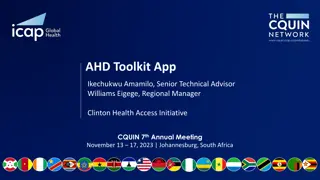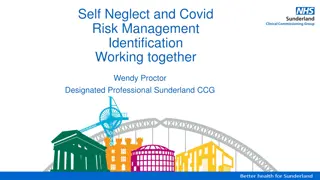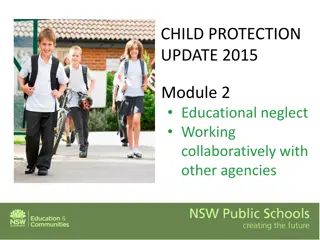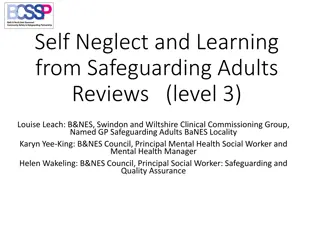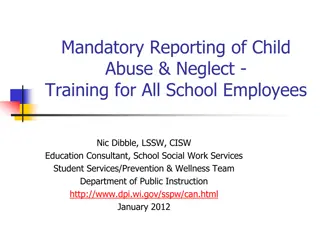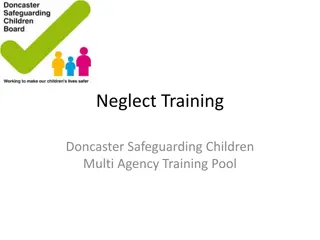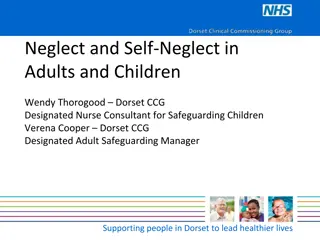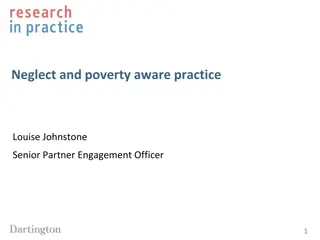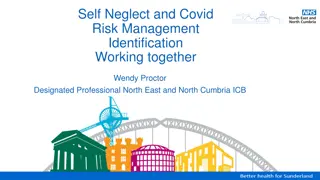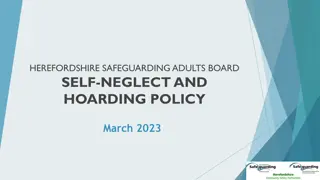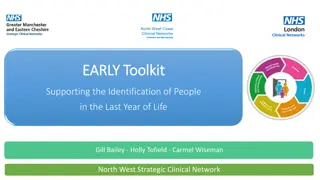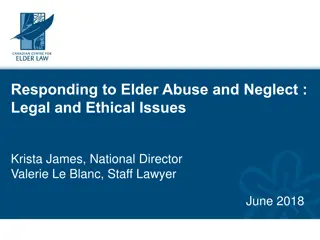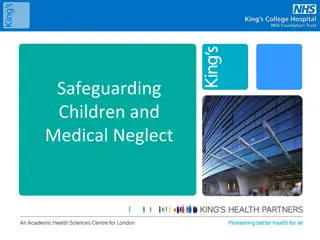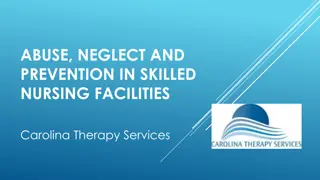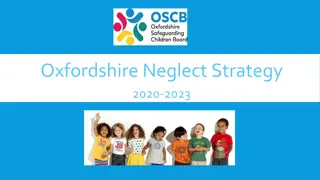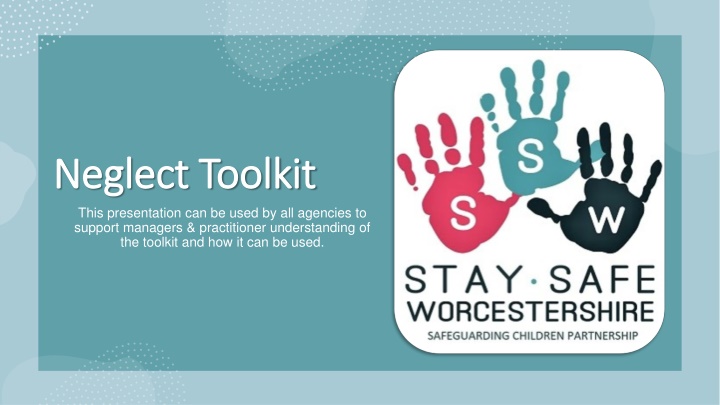
Neglect Toolkit for Safeguarding Professionals
Explore the Neglect Toolkit designed to help practitioners and managers address neglect, understand children's experiences, and support families. Gain insights from feedback shared by young people and parents on utilizing the toolkit effectively.
Download Presentation

Please find below an Image/Link to download the presentation.
The content on the website is provided AS IS for your information and personal use only. It may not be sold, licensed, or shared on other websites without obtaining consent from the author. If you encounter any issues during the download, it is possible that the publisher has removed the file from their server.
You are allowed to download the files provided on this website for personal or commercial use, subject to the condition that they are used lawfully. All files are the property of their respective owners.
The content on the website is provided AS IS for your information and personal use only. It may not be sold, licensed, or shared on other websites without obtaining consent from the author.
E N D
Presentation Transcript
Neglect Toolkit Neglect Toolkit This presentation can be used by all agencies to support managers & practitioner understanding of the toolkit and how it can be used.
As defined by Working Together 2023, Neglect is complex and is not always easily identifiable, the tools are designed to support practitioners and managers across the safeguarding partnership to identify neglect, understand children s experiences and support a plan of what to do next for children & families. The neglect toolkit brings together resources that practitioners can use in their work with children, young people and their families. The tools can be used throughout the child s journey and at different levels of need. Any practitioner can use them to support their understanding of children s lived experience this will support you in what needs to happen to help children. What is the What is the Neglect Toolkit? Neglect Toolkit? The toolkit includes: o Day in the Life Tools for different children s age groups. o Tools to help identify concerns regarding home conditions and progress made following initial worries being identified and addressed with families. o A screening tool to support thoughts, reflections and observations. o Guidance to support planning in response to the information gain from the work with children & families. o A Pathway to support practitioners and managers on how best to respond through the child s journey and at different levels of need.
As part of the review of the tools, we gained feedback from young people, the key points they shared with us are: Important to think about what it is the worker is worried about to focus the questions, not just reading off a sheet. For example, if the key worry is a child being late for school each day, focus on the sections regarding waking up, breakfast and getting ready this will focus the work and be more meaningful. You could ask other professionals, such as schools, child-minders & health professionals to help gain the information; so, the answers are as full as possible; different people will have different perspectives. Important to ask both children and parents questions to get a full understanding. Important to ask questions as openly as possible to gain as much information use a conversational style, not a tick sheet. How do How do children/young children/young people want us people want us to use it? to use it?
As part of the review of the tools, we gained feedback from parents, the key points they shared with us are: Do not talk in a formal way and make this part of a conversation to help answers flow. Do not use it all in one, do bite-size sections of the questions, so it is not overwhelming. Prepare before you come to use the tools, so you know the key sections to focus on this will ensure it does not feel overly long for families. Do not use the tool on its own speak to others as well. How do How do parents/carers parents/carers want us to use want us to use it? it?
Top Tips Top Tips - - How do we use it? How do we use it? Planning & Review through all levels of need the tools can be used, the information you identify will help needs and build into plans what parents need to do, but also what support can be offered to achieve this. Be Prepared plan your visits, sessions & discussions with families; think through the key elements of the toolkit that will best support you to identify and support children s needs. Be Conversational use the tools to discuss key concerns with families, however, do this through your direct work skills the toolkit does not need to be used like a checklist. The Name when speaking to families, you do not need to say The Neglect Toolkit , introduce that you have some worries about a specific area, this may be mealtimes or bedtime routines, and you want to ask the specific questions to help explore this. Supervision the tools can be used in supervisions both in a 1-1 or group basis, this can help discuss and unpick our worries and agree next steps. Do you need to use all the tools and questions? no, use the questions and tools that will help explore your worries for a family.
Worcestershire Levels of Need Guidance: Multi agency levels of need guidance (worcestershire.gov.uk) WSCP Levels of Need Partnership Training: CourseDetail (worcestershire.gov.uk) Worcestershire Neglect Toolkit: Neglect tools and pathways (procedures.org.uk) Working Together 2023: Working together to safeguard children 2023: statutory guidance (publishing.service.gov.uk) West Midlands Regional Procedures: 2.9 Neglect | West Midlands Safeguarding Children Group (procedures.org.uk) NICE Guidance: Overview | Child abuse and neglect | Guidance | NICE NSPCC Guidance Neglect is also Child Abuse: Know All About It | NSPCC & Protecting children from neglect | NSPCC Learning Resources & Resources & Guidance: Guidance:

